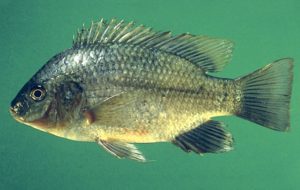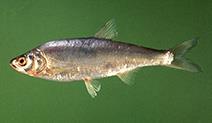Among the parables of the Kingdom of Heaven, preached from the shores of the Sea of Galilee, Jesus explains one easily understandable to the lake’s fishermen:
” The kingdom of heaven is like a net that was let down into the lake and caught all kinds of fish. When it was full, the fishermen pulled it up on the shore. Then they sat down and collected the good fish in baskets but threw the bad away. This is how it will be at the end of the age. The angels will come and separate the wicked from the righteous and throw them into the blazing furnace, where there will be weeping and gnashing of teeth.” (Matthew 13:47-50, Catholic NIV).
In this parable, recorded only by St. Matthew, Jesus speaks of a type of net, which we will describe in more detail in a later work, that captures ‘all kinds of fish.’ It is the trawl net, which, once deployed, is dragged to the shore, and all the fish swiming in the water column are brought ashore, unless they leap over the floats or escape through the mesh openings. What kind of fish is Jesus referring to, some good and some bad?
Currently, there are two types of fish species in the Sea of Galilee. Those introduced by humans, or allochthonous, and those that naturally inhabit the region, or autochthonous. We must clearly exclude allochthonous species as they were introduced in the 20th century. We will use their scientific names, as they are universal, and some of them lack common names in English, because they do not exist elsewhere. Some Mugilidae species, such as Mugil cephalus, were introduced in 1958, as well as some Cyprinidae species like the silver carp Hypophthalmichthys molitrix in 1969, and the common carp Cyprinus carpio (Ministry of Agriculture and Rural Development of Israel and Nun, 1989). These species would not have been among those caught in the time of Jesus.
In addition, there are autochthonous species (Nun, 1989). These include the European eel (Anguila europaea), the catfish (Clarias gariepinus), two species of tilapia, Sarotherodon galilaeus or Mango tilapia, Oreochromis aureus or St. Peter’s fish, three species of barbels, Barbus longiceps, Carasobarbus canis, and Capoeta damascina or Damascus barbel, Mirogrex terraesanctae or Galilee sardine, and Tristramella simonis simonis.
Which fish would be considered bad? It is certain that the Jews would have discarded species present in the lake but considered impure by the Old Testament (Leviticus 11:9-12), such as eels and catfish, as they lack scales (strictly speaking, eels have microscopic scales). In other words, the first two species.
Also among the bad fish would be the small sizes that had accidentally fallen into the net or other species with no commercial value.
The good fish species would be the two types of tilapia, Mango tilapia, and St. Peter’s fish (Figure 1), the three species of barbels, the Galilee sardine (Figure 2), and T. simonis.

Figure 1. St. Peter’s fish
Of the seven good fish species, at least four are proper to the Jordan River basin. This basin is suitable for the existence of endemic species due to its isolation, as it originates in the Hebron Mountains and flows into the Dead Sea. Endemic species are not naturally found anywhere else in the world, meaning they are only found in the Sea of Galilee and the Jordan River. These fish species are the two barbels, Barbus longiceps and Carasobarbus canis, the Galilee sardine M. terraesanctae, and Tristanella simonis.

Figure 2. The Lake Galilee sardine, endemic to the lake
Endemic species are highly vulnerable and can easily disappear, as has already happened with some species in the lake, such as Tristanella sacra (Krupp and Schneider, 1989). If we are to protect our common home, as Pope Francis has invited us to do in the encyclical Laudato Si’, this protection must find its maximum expression in places sanctified by Jesus Christ and with great ecological and ichthyic richness, such as the Sea of Galilee.
By Father Alfonso Sanchez de Lamadrid Rey
